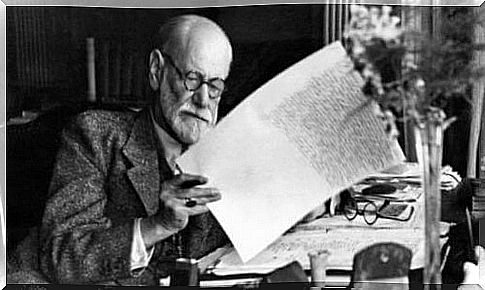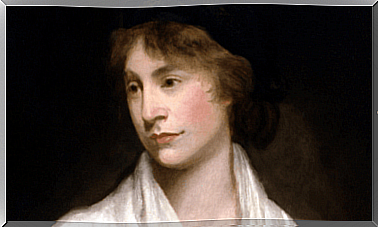What Is Free Association Really?

Free association is a psychoanalytic tool created by the father of psychoanalysis himself, Sigmund Freud. It involves letting a patient express everything that comes to mind during a session. The point is to get rid of filters or judgments about what they are thinking, and to share it with the therapist.
Free association has a theoretical basis, a specific way of doing it, and specific goals. It is a fundamental part of psychoanalysis, but people also use it as a technique for certain projective tests, such as the Rorscach test and the Thematic Apperception Test (TAT).
The story of free association
Sigmund Freud developed the concept over a period of 6 years, between 1892 and 1898. Little by little, he took the hypnosis and purification method he used in the beginning and replaced it with free association. His goal: to avoid suggestions.
Freud began to play with the idea of free association after treating her patient, Mrs. Emmy Von N. in 1982. She explicitly asked Freud to stop disturbing her way of thinking. She wanted him to let her speak freely.

In 1904, in “The Psychoanalytic Method”, he talked about why he decided to drop hypnosis. After working with Breuer, Freud realized that hypnosis had only partial, temporary results.
However, the free association method can overcome the patient’s resistance. Therefore, it would be much easier to access things from their unconscious mind (memories, weak points, symbols). The effect of free association was also permanent, in addition to patients not having to undergo hypnosis for this technique. *
These are the reasons why he replaced hypnotic and cleansing methods with free association. Then he made it the basic principle of how to access and dig into the unconscious mind.
The theoretical basis for free association
When we speak, we choose the specific words we want to use to give context to the message we are trying to send. We all use this word selection process, some people faster than others. But it is always wrong: we say something wrong, forget a word, repeat ourselves, etc. We usually ignore these “mistakes” outside of a therapeutic setting. But inside, they are extremely important.
Psychoanalysts see these “errors” as a manifestation of the unconscious. It’s almost as if what you’re talking about has broken through your defensive barriers. The same kind of thing happens with free association.
Here, therapists free patients from self -control and help them forget their need to make their ideas logical. It is the perfect environment to get carried away and make one’s unconscious stronger and talk. You open up, and that is when you gain access to some unconsciousness.
Freud believed that exposing people’s resilience and then analyzing them was a fundamental part of healing. He also believed that the only way to do that was through free association.
There are actually three basic techniques for clinical analysis: free association, dream interpretation and parapractic. However, free association is the most important here. Freud saw it as the technique that really separated psychoanalytic therapy from all other types of therapy.

How does free association happen?
Free association sometimes happens only on its own. Other times it happens through a dream, fantasy or other form of thought. But for proper free association, the patient must trust his psychoanalyst.
They need to understand that a discussion with their analyst is not like a normal conversation. It is not the same as talking to a friend or acquaintance in your daily life. There will be absolutely no verdict in the session. Nothing is right or wrong. Basically, it’s okay to say anything.
The important part is when the patient lets his thoughts carry them away. Then they can openly express them to their analyst. What they do here allows unconscious symbols to appear to be analyzed, interpreted and worked through. Once they have opened their unconscious mind, they will be able to work through it consciously. The whole point of this is to keep something from being a source of discomfort or conflict.
How can one encourage proper free association?
Of course, it will happen much easier if the patient feels comfortable. Comfort has to do with both the analyst and the analytical space. There should be as little stimulation as possible in the analytical environment.
Before, a sofa was used. The patient would lie and the analyst would be out of their sight, so they would not feel seen, judged or evaluated. The idea was to help them focus completely on their connections.
The analyst would make a simple statement to the patient, “talk about something,” or “say anything that comes to your mind, a picture or memory you think of.” From there, the patient would be completely free to express it. They would not worry about talking coherently or satisfying their analyst.
Footnote
* An analyst can access the patient’s unconscious with hypnosis; that was not the problem. It was that most of the time the patients would go out of the hypnotic state and not remember what they said. Therefore, their opposition would always come back into play. It ended up being the analyst’s word against the patient’s, and it really slowed things down .
On the other hand, patients are fully aware of free association. This means that they must take responsibility for what they said when the analyst will try to explore it.









